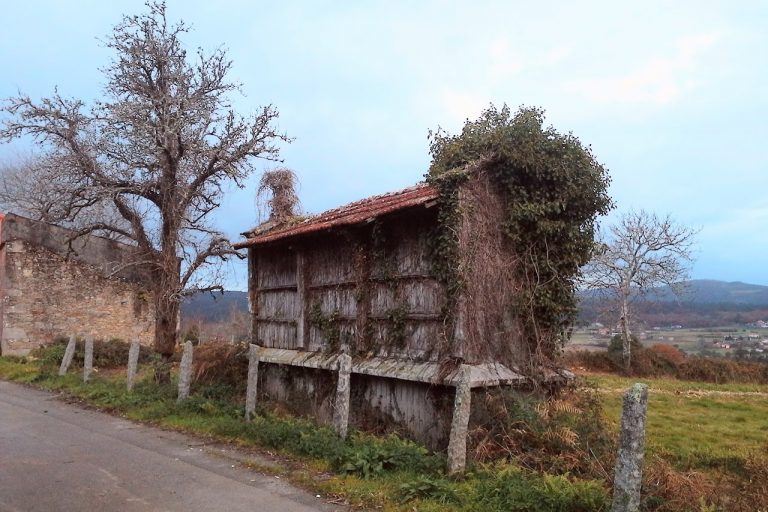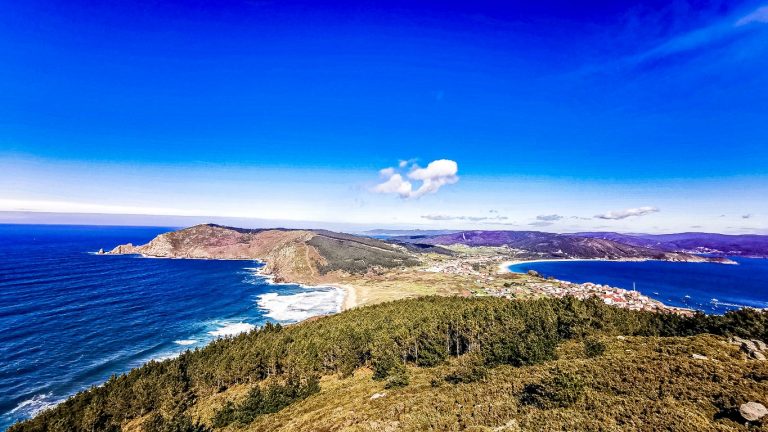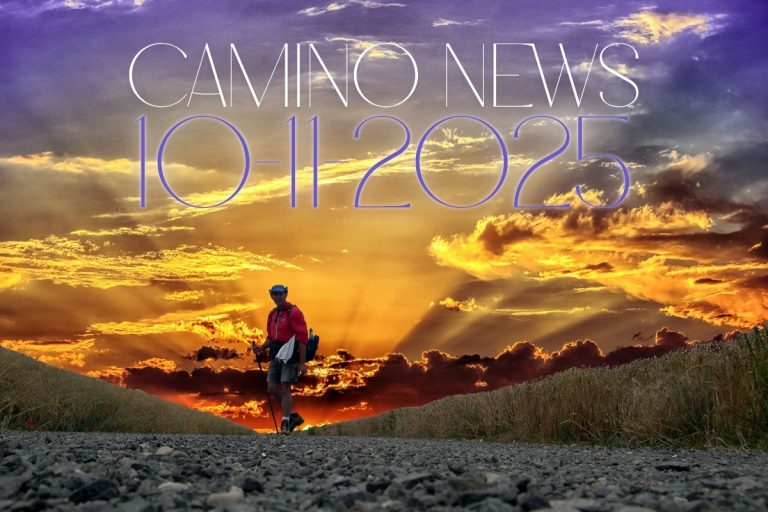
Domingo was not a great man. Not a king, not a bishop, not a knight. Just a boy, born in 1019 in Viloria de Rioja, a small village clinging to the barren hills of La Rioja. The fields were harsh, the wind relentless, and the world spun on, unaware of his name.
But Domingo had a dream. He wanted to speak to God—not through prayers, but through actions. He wanted to become a priest, to study the holy scriptures, to serve the people. But when he knocked on the monastery doors, they shook their heads. “No place for you.” So he moved on.

He found his place where pilgrims on the road to Santiago struggled, suffered, and died. They drowned in rivers, stumbled over rough paths, had no place to rest. Domingo saw their suffering—and did what saints do not do. He did not preach. He did not wait for a miracle. He worked.
With bare hands, he stacked stones upon stones, laid wooden planks over the wild waters of the Río Oja. He carved paths into the ground, built hostels where people could find shelter. Every stone spoke louder than a thousand prayers.

He did not become holy through words. He became holy because he built the way. And the Camino did not forget him.
His work grew. The place he shaped with his own hands became bigger. Pilgrims arrived, merchants followed, and his name became more than a memory. Santo Domingo de la Calzada – where the way was paved.
Domingo García was never officially canonized during his lifetime, yet the people already saw him as a saint. He was the protector of those on the road—the pilgrims, the lost, the seekers. The sick came to him, the travelers sought his blessing. Stories spread that he could perform miracles, that he could save lives where no life should remain. His reputation grew, his deeds spoke for him, louder than any official recognition.
When he died in 1109, at the age of 90, he was already more than a man. His name became a city. His work became a legacy. And his grave became a place of pilgrimage that would last for centuries.

Many years after his death, in the 14th century, a boy and his parents walked the Camino. The world had moved forward, but it had not become better. They traveled toward Santiago, stopping for the night at an inn in Santo Domingo de la Calzada. There, a young woman saw the boy—and her heart was lost to him. But the boy did not return her gaze. Perhaps he was too tired, perhaps too polite, perhaps too devout.
The next morning, she cried out. “He has stolen from me!” The city listened. No one questioned, no one doubted. The guards searched his belongings and found a silver goblet—or maybe a purse, depending on who tells the story. The boy was arrested, sentenced, and hanged.
His parents continued on, praying in Santiago for justice. On their way back, they stopped where their son had died. And there, they saw him. The boy was alive. His body still hung from the gallows, but he spoke. “Santo Domingo held me.”
The parents ran to the judge, who was just sitting down to eat. On his plate: a roasted rooster and a hen. When they told him of the miracle, he laughed and said, “Your son is as alive as these birds before me.”
At that moment, the dead rooster lifted its head. Spread its wings. And crowed.

The judge turned pale, stood up, and ordered the boy to be freed. Ever since that day, for nearly 1,000 years, live chickens have been kept in the Cathedral of Santo Domingo de la Calzada—a symbol of a miracle that the city never forgot.
The story of Domingo García is not one told from pulpits. It is not written in golden letters in holy books. It is carved into stone, woven into the streets where pilgrims still walk today. Domingo did not need an official canonization during his lifetime. His sainthood was not decreed by the Pope, but by the feet that crossed his bridges, by the pilgrims who reached Santiago safely because of him.
Reflection – The Deeper Meaning One man. One bridge. A city that carries his name. He wanted to be a saint—but they would not let him. So he became one with his own hands. What if holiness is not found in prayers, but in the paths you build for others?


